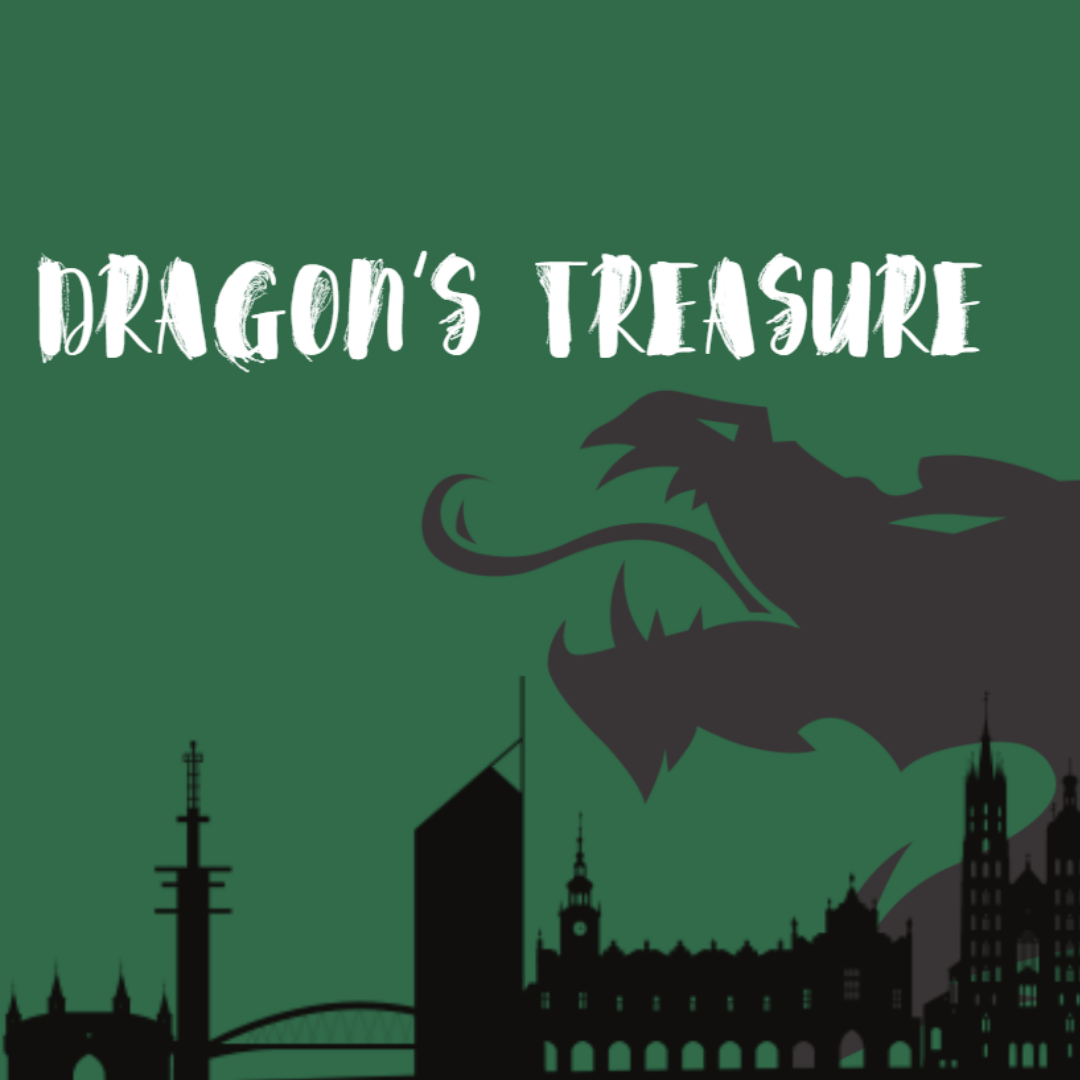
Visit places from our game!
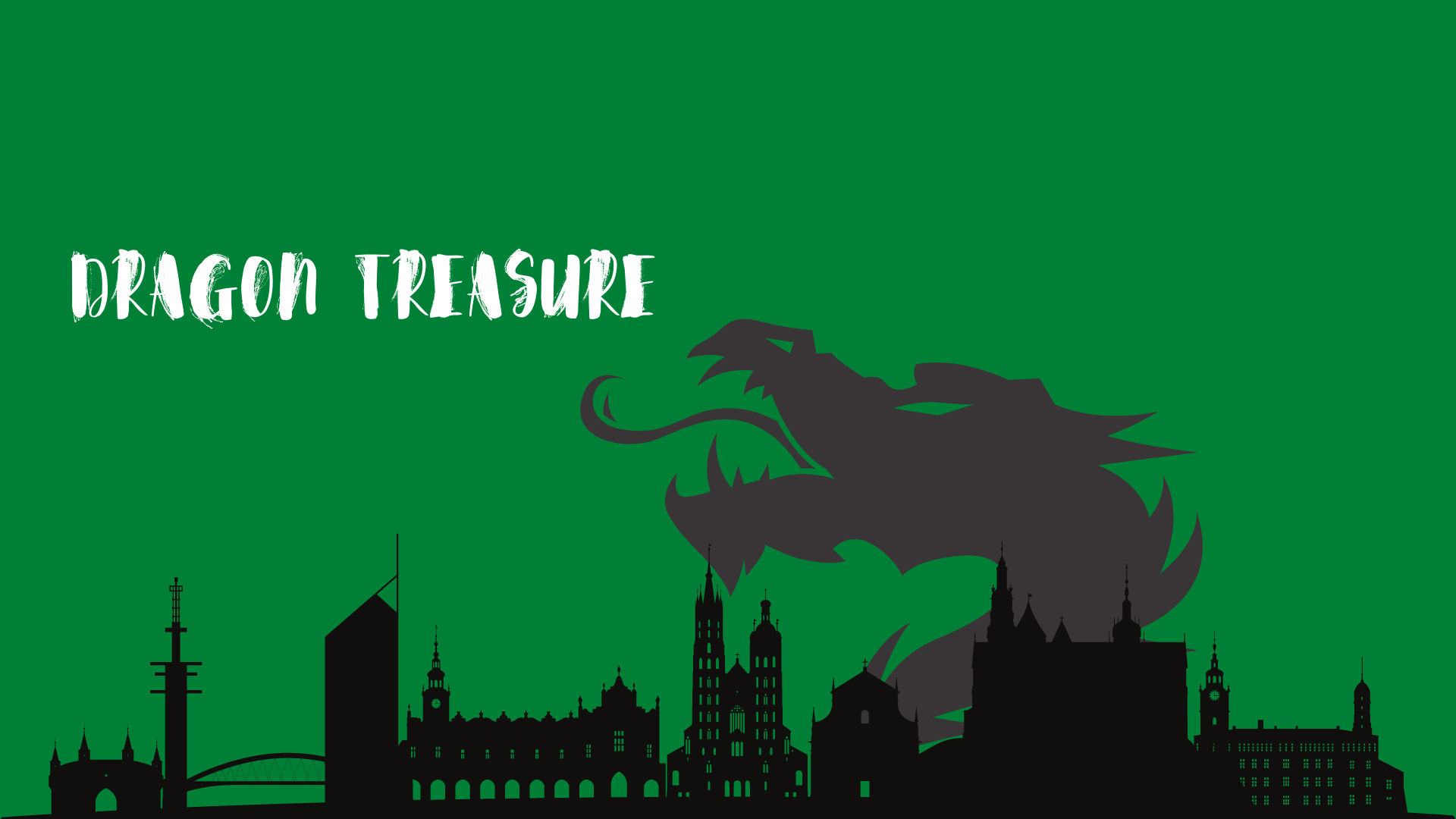
During the game: Dragon's Treasure, we wandered around Krakow. During the game, we visited several places that are real places on the map of our city. The story of the dragon is made up - but not the poets and writers of Bohemian times. They really existed!
The character of the dragon is inspired by an old legend about the Wawel dragon, who ate the local sheep before the brave shoemaker defeated him with trickery.
Want to know more about the legend? CLICK
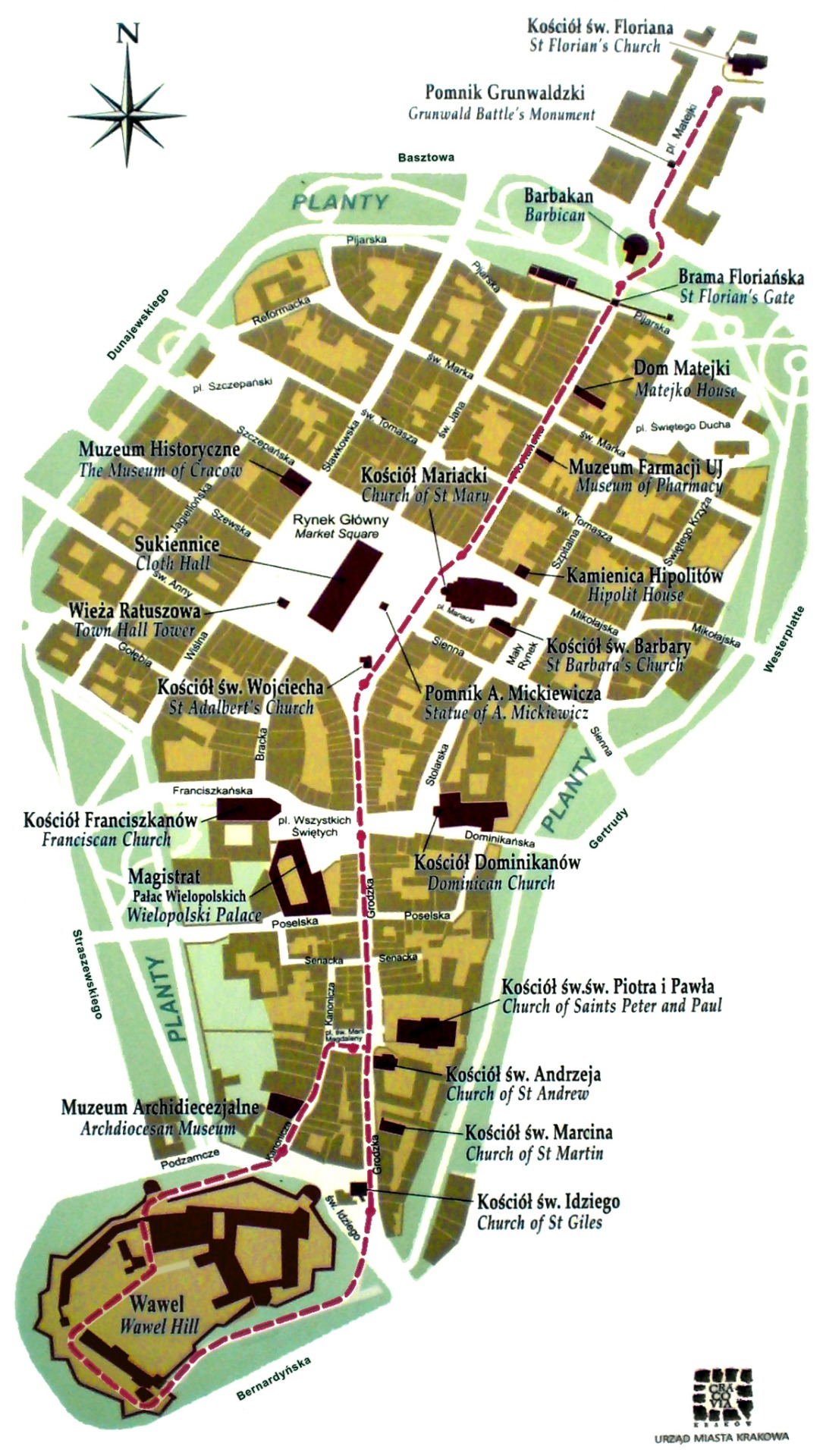
During the game, we were moving along an old trail called: the Royal Route. It begins at the northern end of the medieval Old Town and continues south through the centre of town towards Wawel Hill, where the old royal residence, Wawel Castle, is located. The Royal Road passes some of the most prominent historic landmarks of Poland's royal capital, providing a suitable background to coronation processions and parades, kings' and princes' receptions, foreign envoys and guests of distinction traveling from a far country to their destination at Wawel.
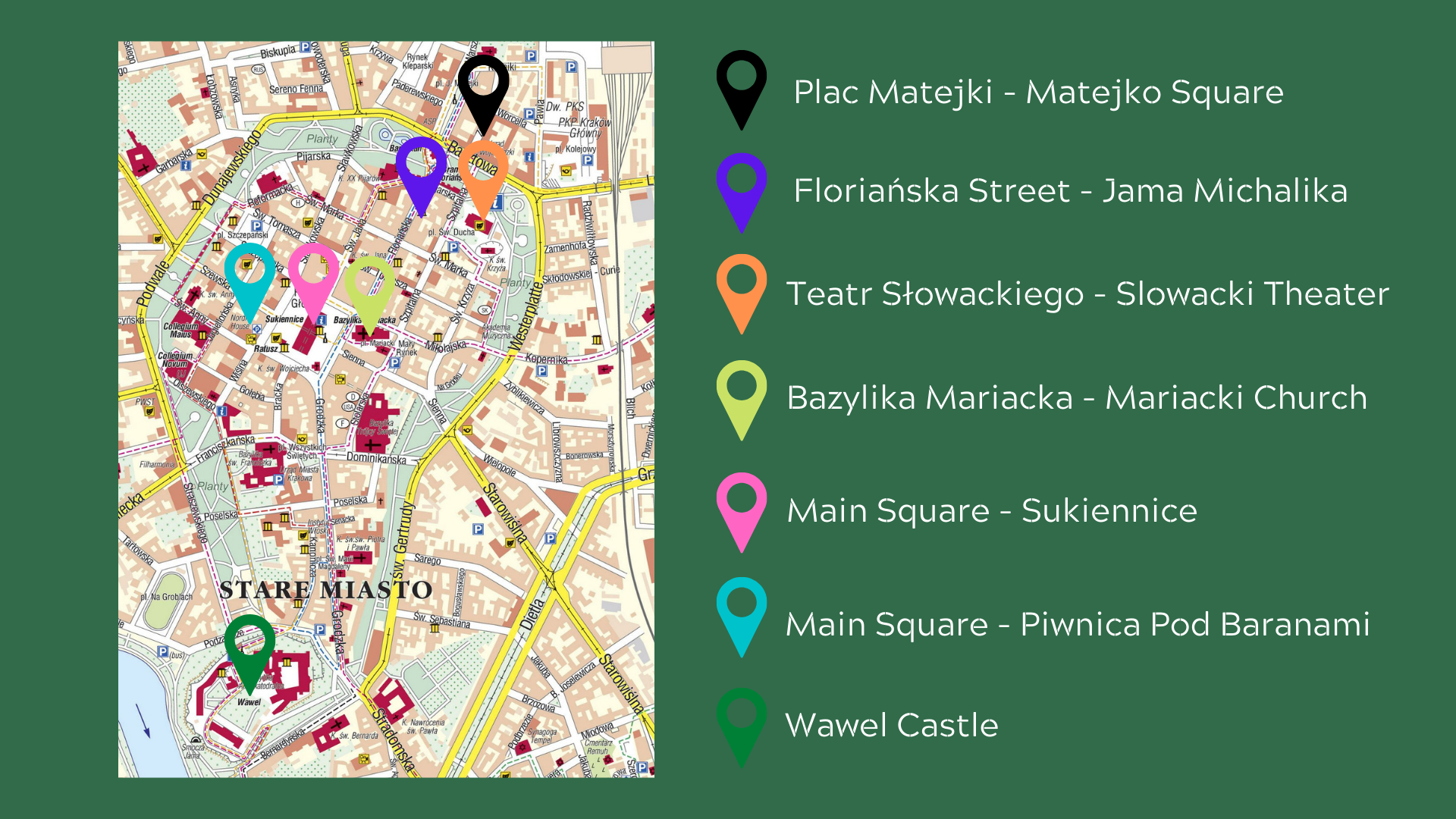
In the picture above, you can see marked all the places we visited during our investigation. They are marked on the modern map of the Krakow city center. When you visit our city, you must visit them!
Below we will tell you a few words about each of these places.
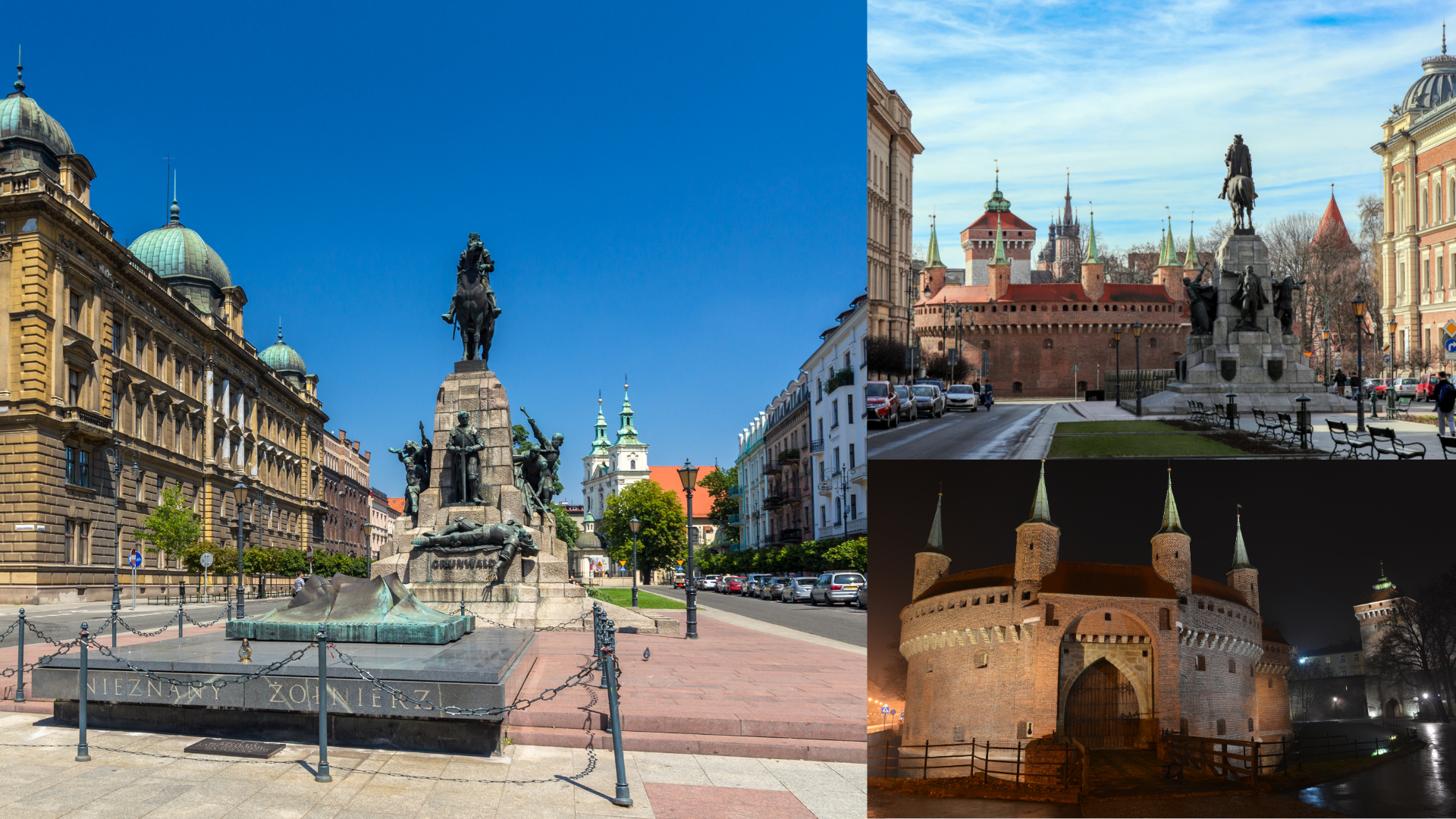
PLAC MATEJKI
As late as the 1870s, today's Matejki Square was still connected to the Rynek Kleparski, forming together a single huge open-air market. It was divided into two by the impressive building of the Academy of Fine Arts built in 1877-1879, and the City's General School completed nearly at the same time, standing at today's. The image of this part of the city began to change slowly into a more representational one. The very name of the Square, which was given to it in 1882, was connected to when honorary citizenship of Kraków was bestowed upon Jan Matejko by the City Council. It was a special act of recognition for the great artist, as it is extremely rare for anyone to become a patron of a square, while they are still alive.
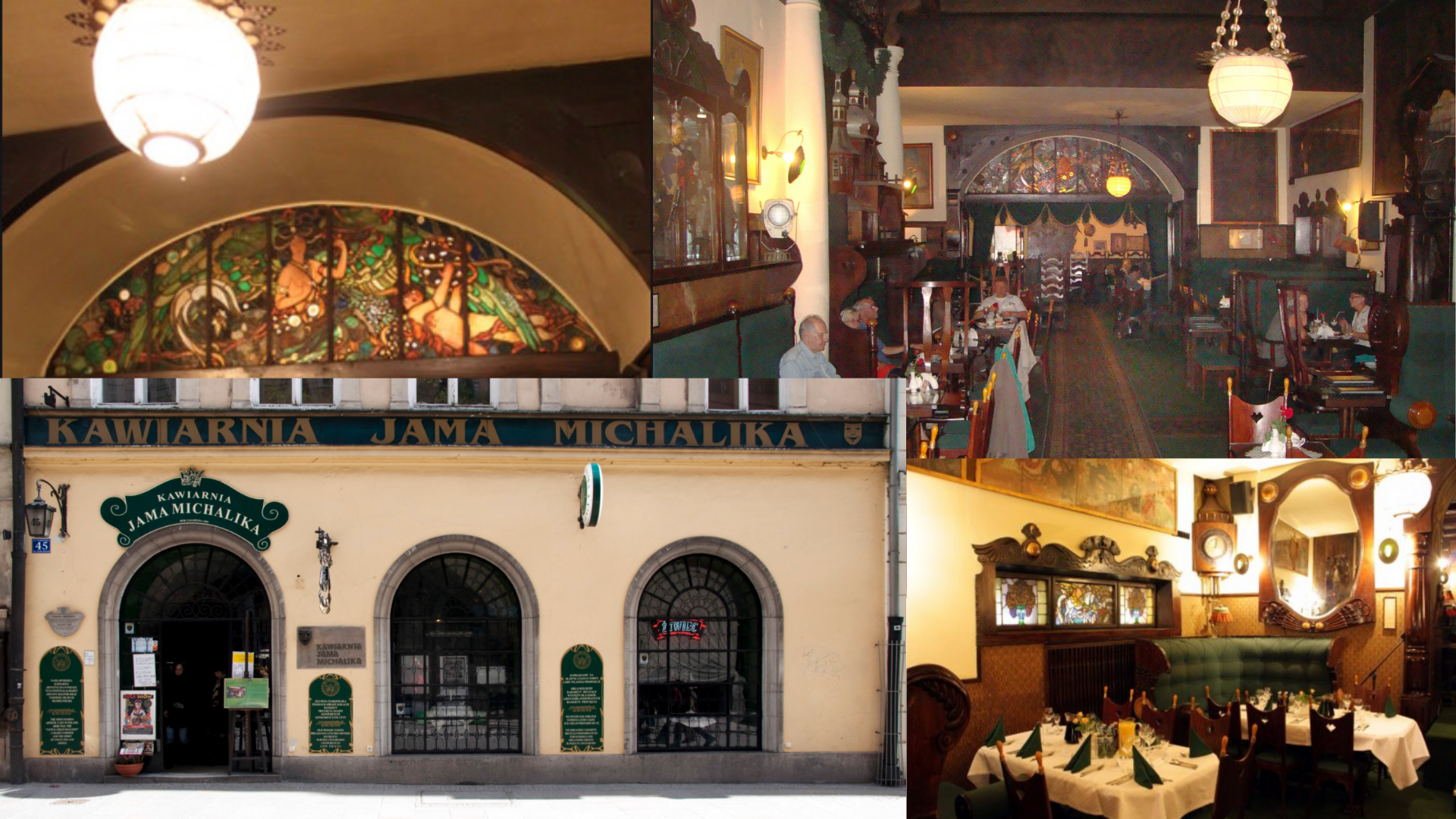
JAMA MICHALIKA
Jama Michalika is a popular café with history spanning over a hundred years. It is located at Floriańska Street in Kraków. Jama Michalika (lit. Michalik's Den in Polish) is one of the oldest Kraków cafes. It was inaugurated in 1895 by Jan Apolinary Michalik. The current name, also translated as the Michalik's Cave, came into existence because initially Michalik could afford only a single room in the back, without any windows. The central location in the Ulica Floriańska 45 as well as the patisserie offering and the invitation to students from the nearby Academy of Fine Arts to eat there free of charge in exchange for their small works of art, the cafe became quickly popular. A selection of those historic puppets are displayed at the cafe. The interior is decorated with Art Nouveau furniture, mirrors, stained glass, lamps and cabinets.

TEATR SŁOWACKIEGO
Juliusz Słowacki Theatre is a 19th-century Eclectic theatre-opera house in the heart of Kraków, Poland, and a UNESCO World Heritage Site. Erected in 1893, it was modeled after some of the best European Baroque and Eclectic theatres such as the Palais Garnier in Paris. The theatre was named after Polish poet Juliusz Słowacki in 1909 and in 1978 was inscribed alongside the Historic Centre of Kraków into the World Heritage Register.
The Theatre became the birthplace of the theatrical concept of the Young Poland movement and was closely related to the rediscovery of Romantic drama as well as the premiere productions of plays by Polish national playwright Stanisław Wyspiański.
The significance of the Polish Romantic tradition under the foreign occupation and especially Słowacki's legacy was reflected in the first festival of his plays organized there in 1909. It was at this time that the Theatre adopted the name of Słowacki and became known as Juliusz Słowacki Theatre.
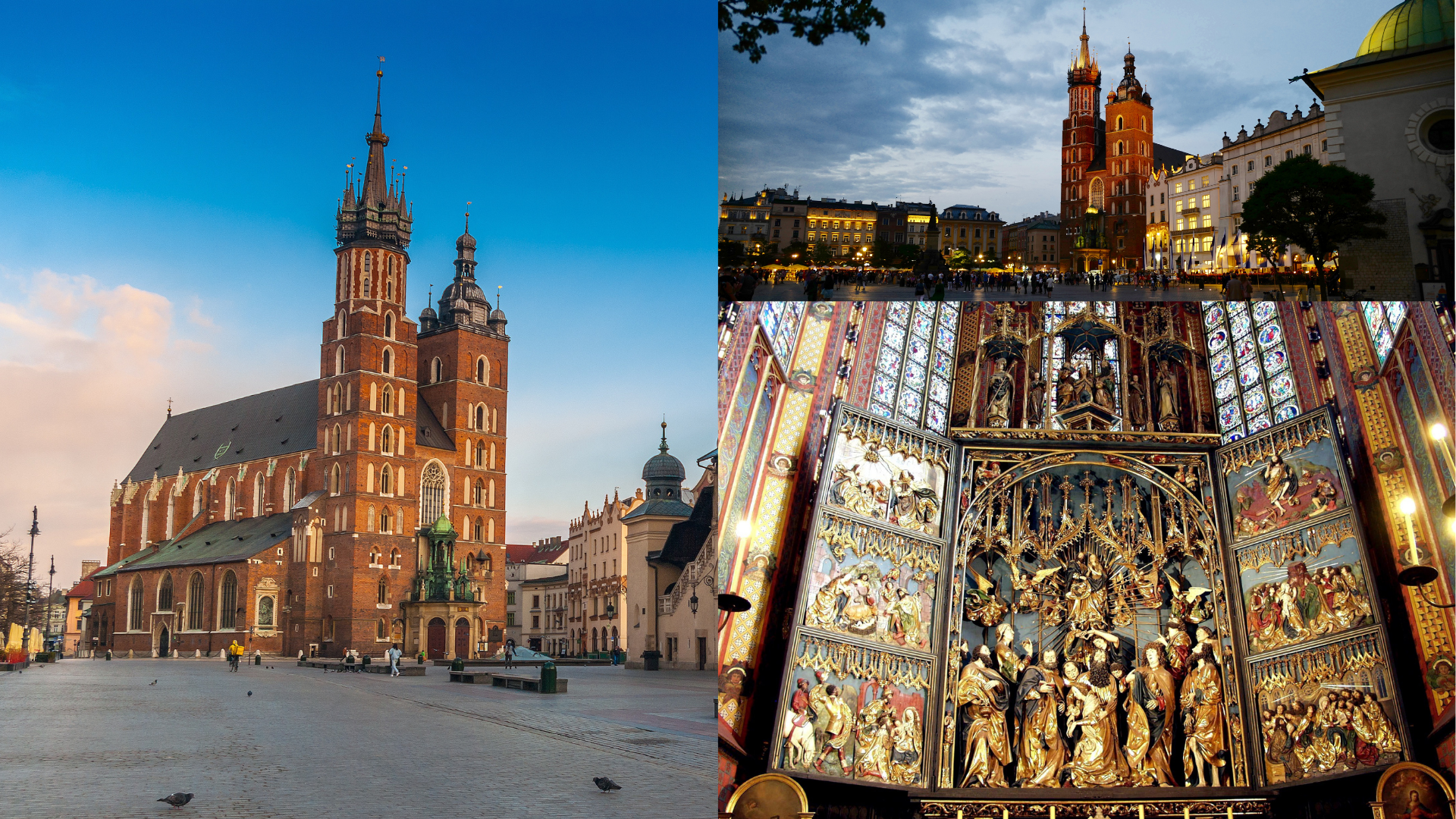
MARIACKI CHURCH
Saint Mary's Basilica (Polish: Kościół Mariacki) is a Brick Gothic church adjacent to the Main Market Square in Kraków, Poland. Built in the 14th century, its foundations date back to the early 13th century and serve as one of the best examples of Polish Gothic architecture. Standing 80 m (262 ft) tall, it is particularly famous for its wooden altarpiece carved by Veit Stoss (Wit Stwosz). In 1978 it became a UNESCO World Heritage Site alongside the Historic Centre of Kraków.
On every hour, a trumpet signal-called the Hejnał mariacki-is played from the top of the taller of Saint Mary's two towers. The plaintive tune breaks off in mid-stream, to commemorate a famous 13th century trumpeter who was shot in the throat while sounding the alarm before a Mongol attack on the city.
Saint Mary's Basilica also served as an architectural model for many of the churches that were built by the Polish diaspora abroad, particularly those like Saint Michael's and Saint John Cantius in Chicago, designed in the Polish Cathedral style.
The construction of St. Mary's Basilica was started in the late 13th century on the foundations of a former Romanesque church. The new temple was consecrated around the year 1320. Over the centuries, the church underwent numerous reconstructions of both its exterior and interior. The extended single-aisle presbytery under a stellar vault was built in the late 14th century. The light comes inside through the high stained-glass windows. Only three windows have been preserved from the original medieval stained glass. The rest is from the 19th century and was created by individuals such as Stanisław Wyspiański and Józef Mehoffer.
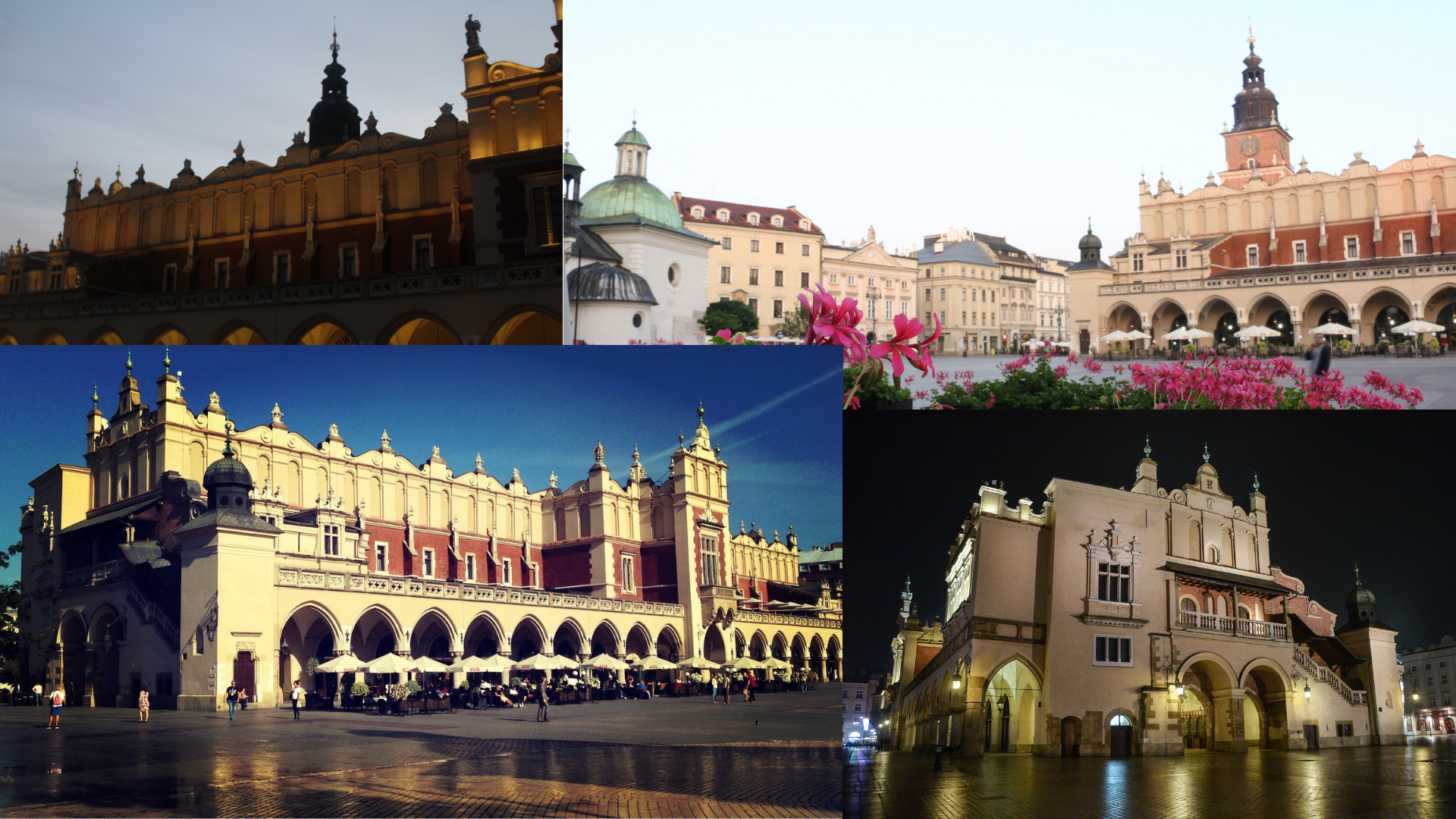
SUKIENNICE
The Cloth Hall is historically the beating heart of Cracows's trade-focused around the Main Market Square. In its first version, it was built in the mid-thirteenth century. Initially, it was a double row of stone stalls in the middle of Main Market Square. In the fourteenth century, the first reconstruction occurred. The original structure was covered at the beginning of the fourteenth century. Thanks to that The Cloth Hall for the first time began to resemble a market hall. In the mid-fourteenth century, Sukiennice was rebuilt again. They have been extended for further stalls. In that form, Sukiennice began to resemble those present.

PIWNICA POD BARANAMI
Piwnica Pod Baranami is a pub with a wonderful artistic soul. Almost every day you can hear here live music. Piwnica is also the most bizarre and the most wonderful cabaret in the world - according to its viewers and friends (and the latter become friends the moment they set their foot inside). And there's a fair chance they are right. There are no directors, no contracts, no money; all proceeds from tickets are shared among the performing artists (and the hall in which they perform only has 80 seats, so the revenue is rather small). The cabaret has been active continuously since 1956. The cabaret has a team of performers, both permanent and temporary, great composers, and stage designers who are known in the whole country and abroad. The group creates a unique ambiance. The craziest fiction is never as hilarious as the truth.
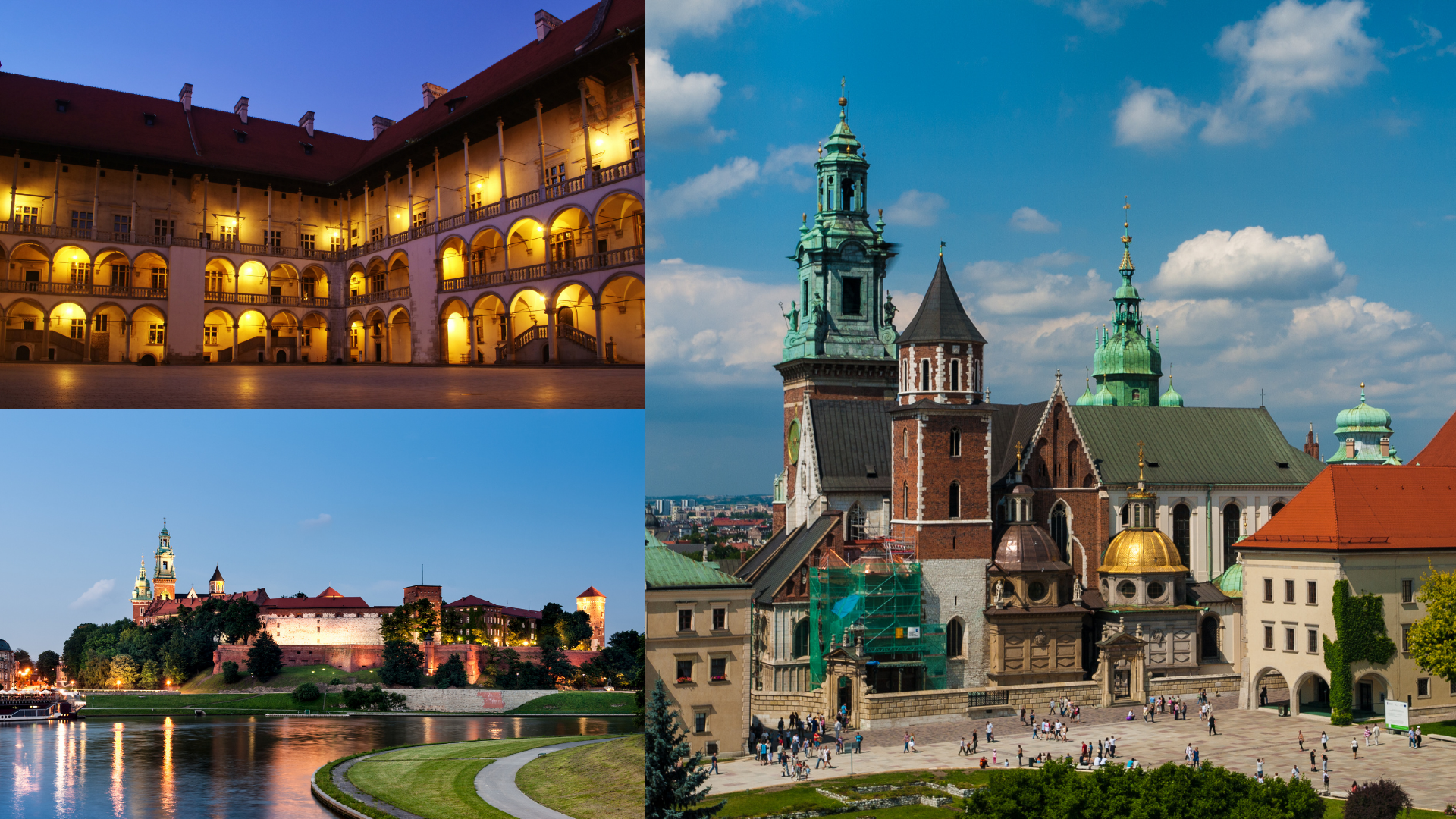
WAWEL CASTLE
The Wawel Royal Castle and the Wawel Hill constitute the most historically and culturally important site in Poland. For centuries the residence of the kings of Poland and the symbol of Polish statehood, the Castle is now one of the country's premier art museums. Established in 1930, the museum encompasses ten curatorial departments responsible for collections of paintings, including an important collection of Italian Renaissance paintings, prints, sculpture, textiles, among them the Sigismund II Augustus tapestry collection, goldsmith's work, arms and armor, ceramics, Meissen porcelain, and period furniture. The museum's holdings in oriental art include the largest collection of Ottoman tents in Europe. With seven specialized conservation studios, the museum is also an important center for the conservation of works of art.

If you will visit Kraków - let us know :) We are also doing scavenger hunts and city games during which you can visit the city! Check them out at www.riddlygames.com